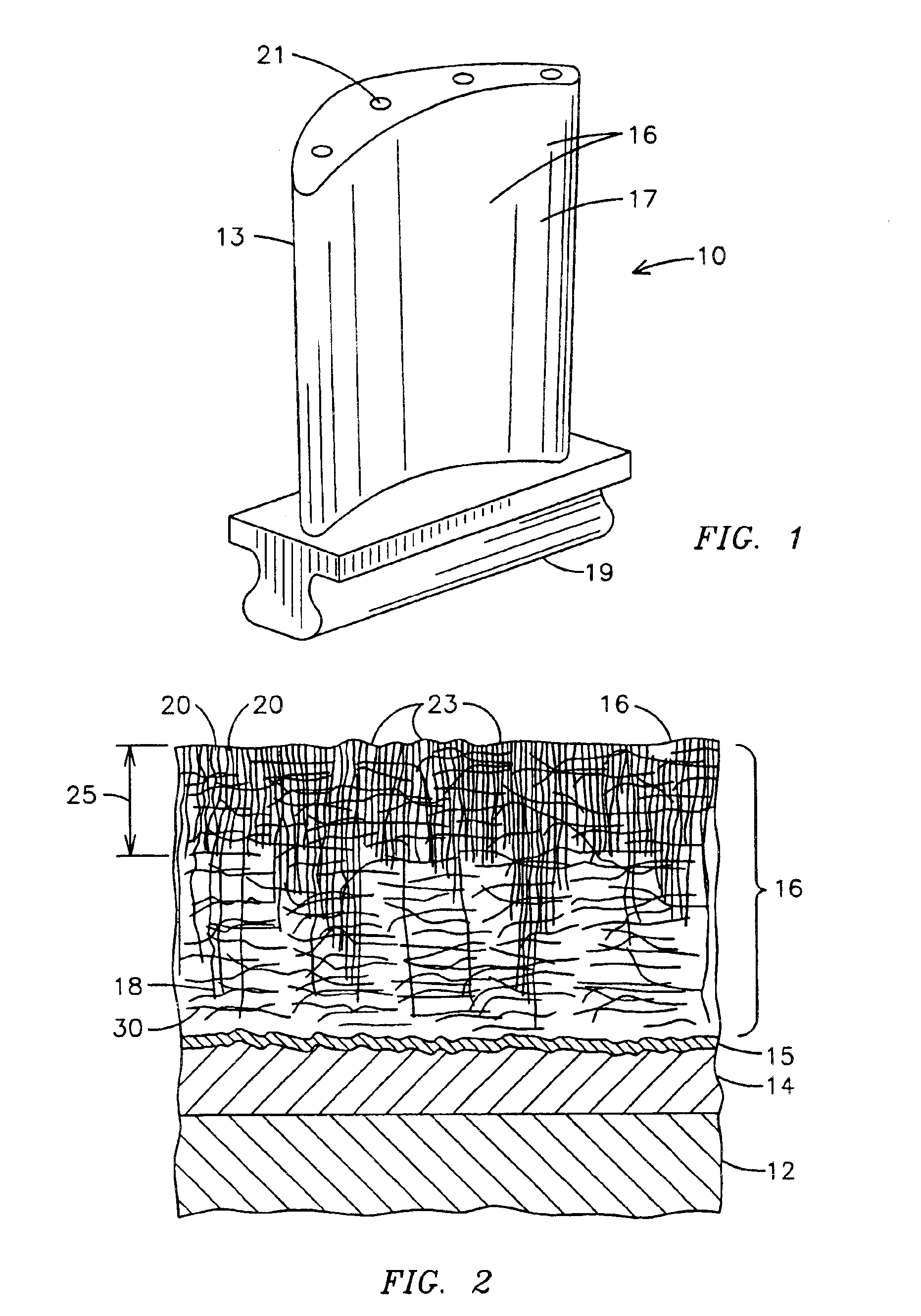Thermal barrier coating resistant to sintering
a technology of thermal barrier coating and sintering, which is applied in the field of thermal barrier coating, can solve the problems of the combustion turbine engine installed in the land-based power generating plant is also subject to high operating temperature and temperature transient, and is required to operate at full power and at its highest temperatur
- Summary
- Abstract
- Description
- Claims
- Application Information
AI Technical Summary
Benefits of technology
Problems solved by technology
Method used
Image
Examples
Embodiment Construction
[0029]When prior art thermal barrier coating systems are exposed to the high temperature environment of the hot gas flow path of a land-based combustion turbine power plant, one of the reasons for failure of the thermal barrier coating is sintering of the ceramic TBC and consequent loss in strain tolerance. A current state-of the-art thermal barrier coating is yttria stabilized zirconia (YSZ). The YSZ may be applied in this invention by thermal spray processes such as new and improved air plasma spray APS, inductively coupled plasma processes, high power and high velocity plasma processes, or by vapor deposition processes such as chemical vapor deposition CVD, MOCVD, or by ceramic processing techniques such as sol-gel, all now well known in the art. These techniques can provide a predominantly vertical (in relation to the substrate) columnar microstructure at the outside surface of TBCs and also create a series of submicron sized horizontal cracks within the YSZ layer intersecting t...
PUM
| Property | Measurement | Unit |
|---|---|---|
| temperature | aaaaa | aaaaa |
| thickness | aaaaa | aaaaa |
| width | aaaaa | aaaaa |
Abstract
Description
Claims
Application Information
 Login to View More
Login to View More - R&D
- Intellectual Property
- Life Sciences
- Materials
- Tech Scout
- Unparalleled Data Quality
- Higher Quality Content
- 60% Fewer Hallucinations
Browse by: Latest US Patents, China's latest patents, Technical Efficacy Thesaurus, Application Domain, Technology Topic, Popular Technical Reports.
© 2025 PatSnap. All rights reserved.Legal|Privacy policy|Modern Slavery Act Transparency Statement|Sitemap|About US| Contact US: help@patsnap.com



